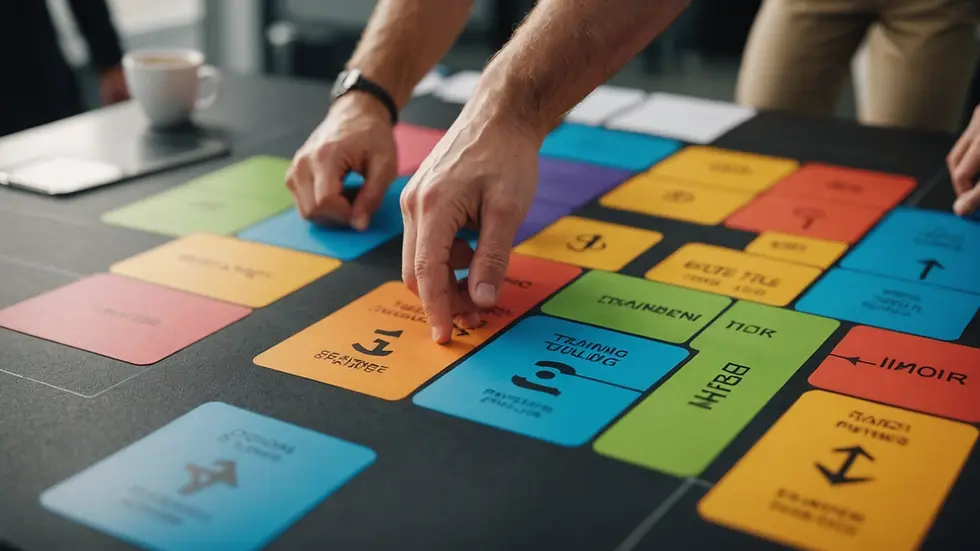Unleashing the Power of Play: Innovative Approaches to Effective Training Exercises
- stevenscanine
- Mar 25
- 3 min read
Training effectively means more than just sitting in a room with slides and lectures. One powerful yet frequently overlooked method for building skills and knowledge is through play. By integrating fun activities and games into training exercises, trainers can create a lively learning atmosphere that keeps participants interested. This approach not only boosts understanding but also enhances information retention. In this post, we will explore creative ways to incorporate playful activities into training, making it enjoyable, immersive, and ultimately effective.
The Importance of Play in Learning
Play is crucial for human development and learning. Historically, it has been recognized as an essential method for absorbing new information, solving problems, and developing critical thinking skills.
Research shows that learning through play significantly boosts motivation. Studies have shown that engaging in playful activities can enhance creativity by 30% or more, particularly in collaborative settings. Additionally, play fosters social bonds, leading to improved teamwork and communication. A relaxed atmosphere reduces the anxiety associated with formal training, encouraging openness and collaboration.
Trainers who recognize the benefits of play can craft an environment where the joy of play facilitates skill development and promotes deeper understanding.
Incorporating Playful Training Exercises
1. Gamification: Turning Objectives into Challenges
Gamification is an effective way to bring play into training. This method involves using game-like elements in non-game contexts to boost motivation and engagement.
Gamification can take forms such as:
Points and Scoring Systems: Assigning points for completing tasks can create a sense of accomplishment. For instance, a sales training program might reward participants with 10 points for each new lead they generate.
Levels and Progression: Creating a tiered structure where learners move through levels fosters motivation. A customer service training program could reward badges for completing specific scenarios.
Incorporating these elements helps ensure participants remain focused on skill acquisition while enjoying a competitive aspect.

2. Role-Playing: Embracing Empathy and Understanding
Role-playing can transform participants into various characters or scenarios. This technique allows learners to apply theoretical knowledge in practical settings.
To add role-playing to training:
Design clear scenarios that align with the training material, such as a mock sales call where participants must handle objections.
Offer guidelines and feedback, helping learners refine their approaches.
Role-playing builds understanding and empathy, boosting confidence when facing real-world challenges.

3. Team Building Activities: Fostering Collaboration
Team building activities allow individuals to connect while working towards shared goals. These activities break down barriers and enhance teamwork, critical skills in any training environment.
Effective team-building activities include:
Trust Falls: Simple but impactful exercises that strengthen trust and communication.
Problem-Solving Challenges: Assigning tasks that require teamwork can foster innovative solutions.
Encouraging interaction helps participants learn from each other while developing essential interpersonal skills.
4. Use of Technology: Engaging with Digital Play
In our digital world, technology can make training enjoyable and effective. Many apps and platforms offer interactive games and simulations designed for educational purposes.
Examples include:
Virtual Reality (VR): Using VR to immerse learners in a risk-free training simulation, such as practicing emergency response scenarios.
Mobile Applications: Utilizing or creating apps that turn training content into engaging game formats, helping learners practice on-the-go.
These digital tools capture attention and provide unique learning opportunities.
5. Storytelling: Weaving Narratives into Training
Storytelling appeals to our innate attraction to narratives. By presenting training content through engaging stories, trainers create relatable experiences that enhance understanding.
To use storytelling effectively in training:
Craft case studies that present challenges participants must navigate, like a team facing a crisis.
Open the floor for group discussions around the narrative, encouraging learners to share perspectives and solutions.
Combining storytelling with active participation can result in a higher level of investment and engagement from learners.
Unlocking the Potential of Play
Incorporating playful activities into training offers profound benefits for both trainers and participants. By embracing strategies like gamification, team building, role-playing, technology integration, and storytelling, trainers create an environment that promotes effective learning.
The power of play is a tool ready to be harnessed, enriching the training experience and making learning feel more like an adventure than a chore. As organizations seek innovative training methods, embracing play can lead to notable improvements in engagement, retention, and practical application of knowledge.
By embracing play in your training methodologies, you'll likely discover an enhanced understanding and greater skill retention among learners. Unleash the power of play, and watch as participants thrive in a vibrant, dynamic learning environment.






Comments